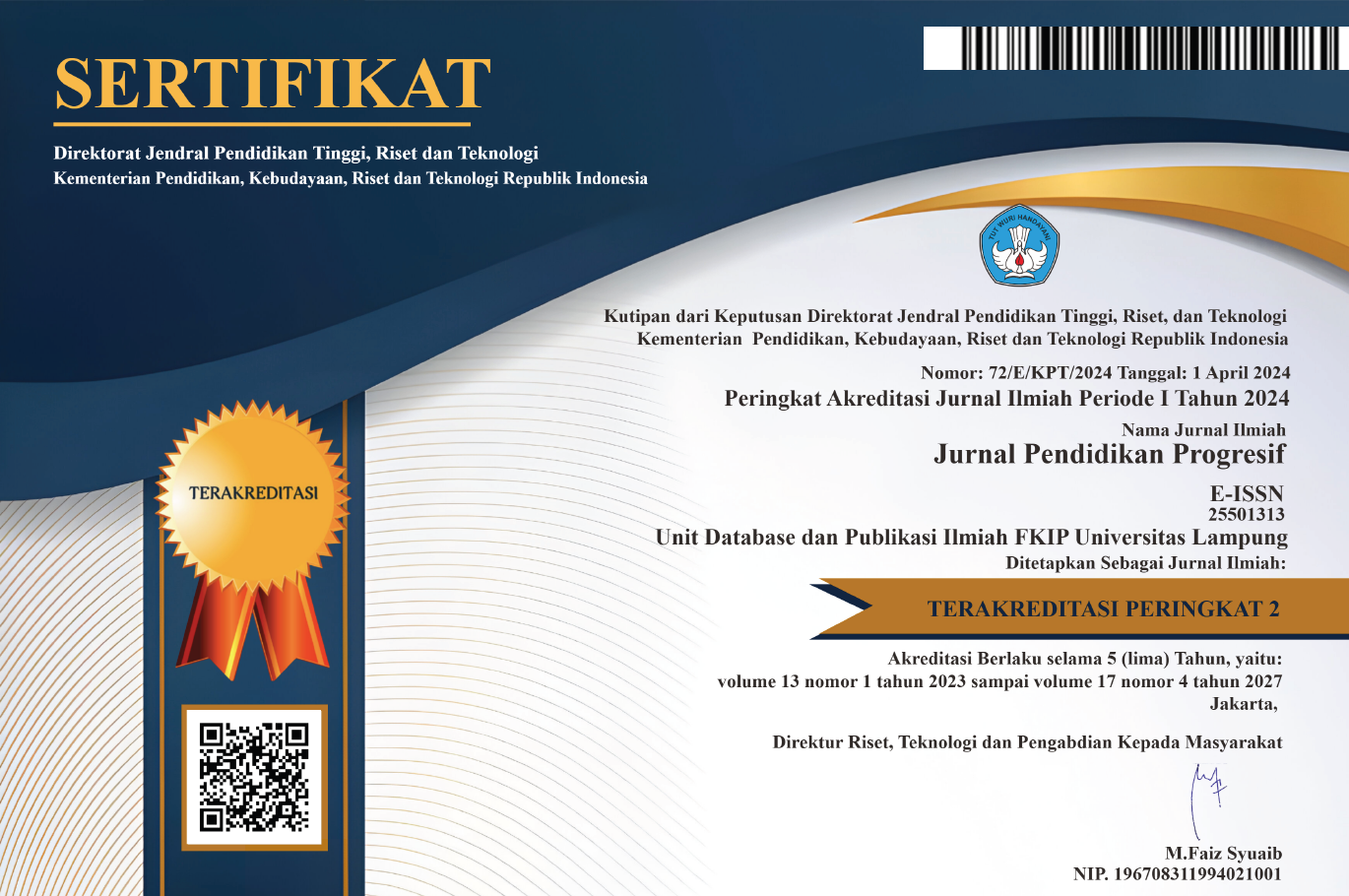Workload and Workplace Well-being of Junior High School Teachers: Their Implications to NAT Performance of Grade 10 Students
 Country:
Country:
(1) Bukidnon State University, Philippines
(2) Bukidnon State University, Indonesia
(3) Bukidnon State University, Philippines
| Metrics→ |
| Indexing Site→ |
Copyright (c) 2025 Mercidita Sendaydiego Villamayor, Shaunell Mary Josol Sayson, Hannah Tuyor Castillon
Workload and Workplace Well-being of Junior High School Teachers: Their Implications to NAT Performance of Grade 10 Students. Objectives: This research examined Grade 10 students' 2017-2018 NAT performance, explored junior high school teachers' workload and workplace well-being, and investigated the relationship between workload, workplace well-being, and NAT performance. Methods: Descriptive-correlational designs were used, utilizing BEA data and survey questionnaires on workload and workplace well-being administered to junior high school teachers in Malaybalay and Valencia Cities. Findings: Grade 10 students' 2017-2018 NAT performance was low proficient, and junior high school teachers reported heavy workloads but high workplace well-being. No significant relationships were found between NAT performance and workload or workplace well-being. Conclusion: Grade 10 students' 2017-2018 NAT performance presented a challenge. Teachers reported heavy workloads but high workplace well-being. Other factors may affect student performance, requiring further investigation to enhance educational outcomes.
DOI: http://dx.doi.org/10.23960/jpp.v13.i3.202301
Bakker, A. B., Demerouti, E., & Verbeke, W. (2004). Using the job demands-resources model to predict burnout and performance. Human Resource Management, 43(1), 83-104.
Bourdieu, P. (1986). The forms of capital. In J. Richardson (Ed.), Handbook of theory and research for the sociology of education (pp. 241-258). Greenwood Press.
Caprara, G. V., Barbaranelli, C., Steca, P., & Malone, P. S. (2006). Teachers' self-efficacy beliefs as determinants of job satisfaction and students' academic achievement: A study at the school level. Journal of School Psychology, 44(6), 473-490.
Darling-Hammond, L., Holtzman, D. J., Gatlin, S. J., & Heilig, J. V. (2009). Does teacher preparation matter? Evidence about teacher certification, Teach for America, and teacher effectiveness. Education Policy Analysis Archives, 17(36), 1-48.
Darling-Hammond, L., & McLaughlin, M. W. (2002). Policies that support professional development in an era of reform. Phi Delta Kappan, 84(7), 597-604.
Department of Education. (2019). 2018 NAT and PISA Results Reflect Need to Improve Quality of Basic Education. Retrieved from https://www.deped.gov.ph/2019/12/03/2018-nat-and-pisa-results-reflect-need-to-improve-quality-of-basic-education/
Duckworth, A. L., Peterson, C., Matthews, M. D., & Kelly, D. R. (2009). Grit: perseverance and passion for long-term goals. Journal of Personality and Social Psychology, 92(6), 1087-1101.
Ekwulugo, F. (2015). Teacher well-being and teacher effectiveness in the United Kingdom. Teacher Education Advancement Network Journal, 7(1), 7-16.
Evans, G. W., & Cohen, S. (1987). Environmental stress. In D. Stokols & I. Altman (Eds.), Handbook of environmental psychology (pp. 571-610). Wiley.
Esguerra, D. Y. (2018). Teachers in public schools overworked – study. Philippine Daily Inquirer. Retrieved from https://newsinfo.inquirer.net/980641/teachers-in-public-schools-overworked-study
Fajardo, J., Mendoza, M., & Valdellon, L. (2016). Workload of public secondary school teachers: Determining factors and implications. The Educational Review, USA, 17(3), 100-123.
Fisher, C. D. (2009). Conceptualizing and measuring workplace stressors: A behavioral–environmental perspective. Journal of Occupational Health Psychology, 14(4), 289-297.
Goldhaber, D. D., & Brewer, D. J. (2000). Does teacher certification matter? High school teacher certification status and student achievement. Educational Evaluation and Policy Analysis, 22(2), 129-145.
Gulwadi, G. B. (2006). Stress and mental health: The mediating role of self-efficacy in IT professionals. Unpublished doctoral dissertation, University of Pune, India.
Hargreaves, A. (2000). Four ages of professionalism and professional learning. Teachers and Teaching: History and Practice, 6(2), 151-182.
Hargreaves, A. (1994). Changing teachers, changing times: Teachers' work and culture in the postmodern age. Teachers College Press.
Hickman, G. P., Bartholomew, T. T., & Mathwig, J. L. (2008). The relationship between student achievement and professional learning communities at the middle school level. Research in Middle Level Education Online, 31(6), 1-15.
Jennings, P. A., & Greenberg, M. T. (2009). The prosocial classroom: Teacher social and emotional competence in relation to student and classroom outcomes. Review of Educational Research, 79(1), 491-525.
Kyriacou, C. (2001). Teacher stress: Directions for future research. Educational Review, 53(1), 27-35.
Markow, D., Pieters, J., & Van Hout-Wolters, B. (2007). The influence of workload on teacher-student interactions in the classroom. Learning Environments Research, 10 (1), 123-141.
McCaffrey, D. F., Lockwood, J. R., Koretz, D. M., & Hamilton, L. S. (2003). Evaluating value-added models for teacher accountability. Santa Monica, CA: RAND Corporation.
Mc Clelland, D. C. (1985). Human motivation. Cambridge University Press.
Meilgrom, C., Rosenbaum, P. R., & Rubin, D. B. (2008). Observational studies. New York, NY: John Wiley & Sons.
Philippine Institute for Development Studies (PIDS). (2019). Reducing the burden on teachers: The time required to teach in Philippine schools. Retrieved from https://www.pids.gov.ph/press-releases/1386
Pullin, D. (2018). Effects of workload on teachers’ job satisfaction and work-related stress. In C. Day (Ed.), The Routledge International Handbook of Teacher and School Development (pp. 194-207). Routledge.
Rath, T., & Harter, J. (2010). Well-being: The five essential elements. Gallup Press.
Rivkin, S. G., Hanushek, E. A., & Kain, J. F. (2000). Teachers, schools, and academic achievement. Econometrica, 68(4), 727-754.
Rowan, B., Correnti, R., & Miller, R. J. (2002). What large-scale survey research tells us about teacher effects on student achievement: Insights from the prospects study of elementary schools. Teachers College Record, 104(8), 1525-1567.
Sage, R. (2019). The power of community: Building teacher collaboration. Retrieved from https://www.edutopia.org/article/power-community-building-teacher-collaboration
Salom, L. G. (2013). Time management and its relationship to time-related workplace well-being and job satisfaction: An exploration of the Australian time use survey data. Journal of Workplace Behavioral Health, 28(4), 255-273.
Stallings, J. (1995). On teaching and time. International Journal of Educational Research, 23 (3), 191-207.
Van Droogenbroeck, F., & Spruyt, B. (2014). To quit or not to quit: The role of job and personal resources in teachers' intention to leave the teaching profession. European Journal of Psychology of Education, 29(4), 521-535.
Refbacks
- There are currently no refbacks.

This work is licensed under a Creative Commons Attribution-ShareAlike 4.0 International License.
View My Stats


